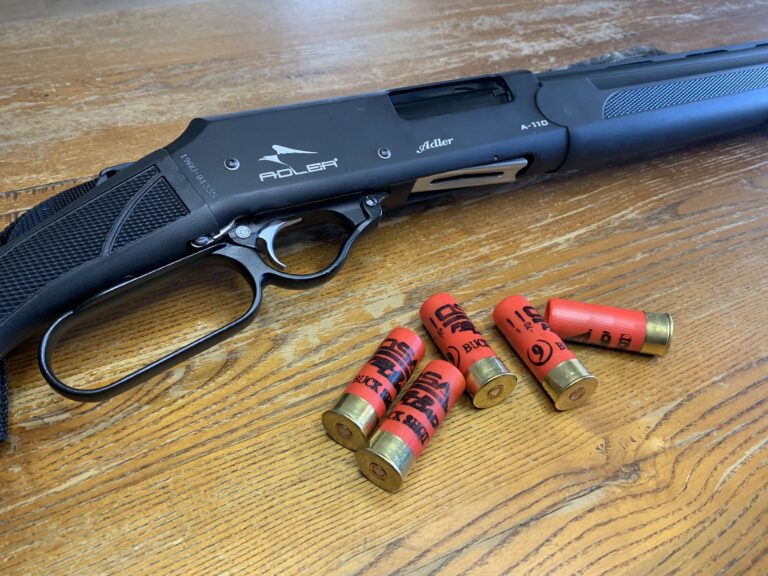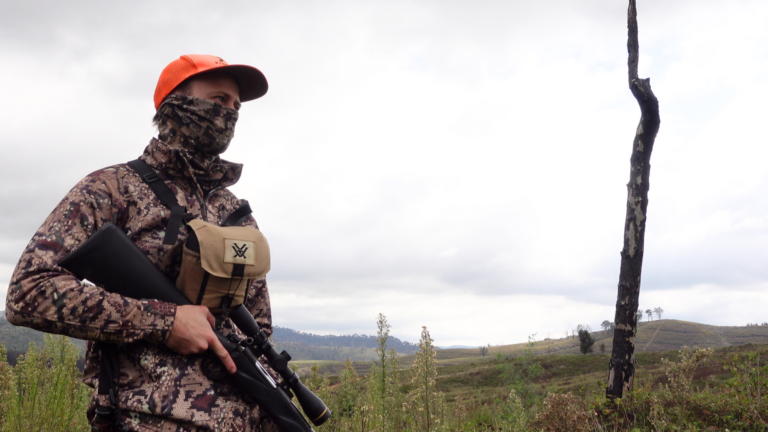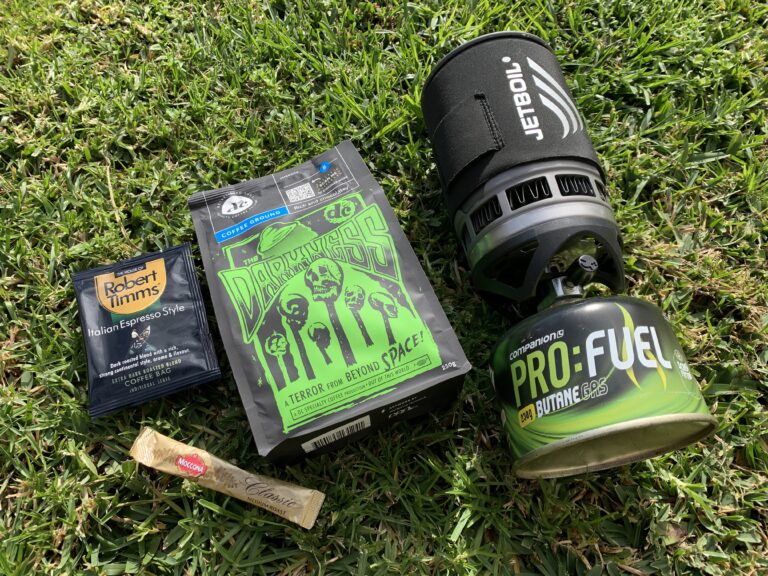When the topic of food is brought up in conversation, there’s one universal truth that we can all agree on – Fresh is always best. The unfortunate reality for many households is that ‘fresh’ isn’t always a viable option. Beyond the usual free time and budgetary constraints that prevent many of us from regular participation in our chosen hunting or fishing activities. In most circumstances, it’s simply impossible to consume all of the meat that we have acquired before it naturally expires. Thankfully, the majority of us are familiar with the solution to this problem and it’s readily available in our homes – the household freezer.
While some may attribute a decline in meal quality solely to this method of meat preservation, I’m here to assist you with the true underlying causes of the problem. More specifically – the way we package, freeze, and thaw our meat. Let’s start by looking at the products that we use to package our meat.
Meat packaging
There are a variety of products on the market that claim to be the best way to preserve food in the freezer. While each product has its intended purpose, some of these options will vastly outperform the others in terms of simplicity, shelf life, and abrasion resistance. I’ve attached a list of the most common options below, along with the pros and cons of each one.
Freezer bags
Freezer bags are the go-to choice for many households. They serve one single purpose and do a reasonable job at it. That is – storing meat on a short-term basis. While they are the cheapest solution on this list, their ultimate downfall is their brittle nature and their tendency to trap air inside the bag. Both of these factors will create freezer burn over a relatively short period of time. If you’re looking for an effective long-term storage solution, this isn’t it. Check out some of the other options below and consider these bags as a short-term or ’emergency use’ item only.
Vacuum sealed bags
More resistant to breakage than freezer bags, but this comes at the cost of the appliance, the plastic bagging material, and a steep learning curve to master the process. Most beginners will initially feel frustration when dealing with ‘wet’ products, such as meat. This is due to the tendency of the machine to draw in moisture from the product and deposit it on the sealing edge of the bag – often leading to an improper seal. If this is not corrected through the application of an additional seal, or by repackaging the product entirely, the bag will eventually lose vacuum pressure. Any meat stored in this condition is guaranteed to end up with freezer burn.
Understandably, people will either love their vacuum sealer or hate it – based on their level of proficiency. If your heart is set on this style of meat packaging, I suggest that you brush up on the many available YouTube videos and invest in a quality machine. As the old saying goes – you get what you pay for. In the case of a vacuum sealer, you may save a few dollars on a cheaper machine, but you are guaranteed to pay with your sanity. So, don’t skimp on the price tag!
Troubleshooting: If you are having problems forming an air-tight seal make sure that your bags are not wet, overfilled, or broken. The gasket on the machine’s sealing edge should also be inspected to ensure that it’s not damaged or dirty. After rectifying your issue, you can opt to perform a test cycle to verify your machine’s ability to form a vacuum-tight seal. To do this, place a tablespoon inside a fresh vacuum seal bag and attempt to seal it as you would with any other item. If a proper seal is formed, the root cause of your problem has either been fixed, or it may have been related to user error.
Cling wrap and butcher’s paper
If you’ve stumbled across this website through social media, likely, you have also browsed the lengthy back catalogue of MeatEater episodes that are currently available on Netflix or YouTube. If that’s true, this method will sound very familiar to you. While it’s not a new technique for meat packaging, its popularity has surged among the younger generation due to its prominent use in many of the larger hunting TV shows – and for good reason. When compared to vacuum sealing, this method will provide you with a more cost-effective solution for packaging your meat. If done right, it will also provide you with equal or greater protection against freezer burn and long-term storage damage. For those of you who aren’t familiar with the process, here’s how it works –
For this method, you will need a roll of cling wrap (or saran wrap, for any North Americans reading this), a roll of white butcher’s paper (or newspaper, etc), a roll of sticky tape, and a permanent marker. Start by placing a large sheet of cling wrap on top of your kitchen bench. You want this sheet to be 4-5x larger than the bottom surface area of your meat, as this will ensure that you have plenty of material to fully wrap your meat. Place your meat in the centre of this plastic sheet, laying it as flat as possible. Apply firm pressure to the plastic and fold up each side to cover your meat. As you overlap each section of the plastic wrap, make sure that you press out any trapped air pockets that may appear. Once the meat has been fully sealed in a layer of plastic, add a layer of butchers paper (etc) to your package and tape it up. This paper will act as a sturdy layer of protection for your meat and ensure the inner plastic lining is not damaged as items are shifted around in your freezer. Finally, add a label to each package. This should include the type of meat that it contains and the packaging date. This information will help you to calculate the approximate expiry date of your meat.
The saltwater method for freezing prawns.
This method requires you to fill a container with prawns and saltwater, and then freeze it. That sounds simple enough, right? Well, it is. The trick is to find a container with a sturdy lid and then make sure that you don’t overfill it with too many prawns. For the best results, you want the prawns to be fully covered with salt water, while still leaving enough room to account for the expansion of the water as it freezes (roughly 9% in volume). To defrost, simply place the container inside your refrigerator for 24 hours and allow the ice to slowly melt away. Once the ice has melted, pour off the excess liquid and cook (or consume) the prawns as you would normally.
General tips
When it comes to packaging and freezing your meat, simplicity will be the key to your success. So with that in mind, here are a few simple tips that will help you safeguard the quality of your meat.
Packaging
When packaging your meat, it should be positioned in a way that allows the meat to remain as flat as possible. This has two benefits – First of all, it will reduce the amount of time that it takes to fully thaw your meat. Lastly, it will ensure that thinner cuts of meat (like steak) do not remain partially frozen in the centre as they would if they were rolled or bundled up. If multiple cuts of meat are placed inside the same package, a plastic liner can be added between each layer to make the separation and thawing process easier. Once your meat has been placed inside your package, the next step is to remove as much air as possible before creating a seal. This will reduce the formation of freezer burn as outlined below.
Prevent hot air from entering your freezer
In a perfect world, your household’s meat would be stored in a secondary freezer that is rarely opened. This would minimise the introduction of warm air inside the appliance. When warm air makes contact with your frozen goods it creates moisture inside the packaging. This moisture is drawn from your meat due to the partial thawing of the outer surface layer (microthaw). Once the freezer door has been closed, this moisture will re-freeze and turn into ice crystals on the surface of your meat. The more air that’s trapped inside your packaging and the more frequently this cycle occurs, the larger these crystals will become. This constant cycle of drawing moisture from your meat and turning it into ice crystals is what’s commonly known as freezer burn. In short, this process is dehydrating your meat which creates a tasteless and undesirable product.
Understandably, maintaining a second freezer may not be a viable option for everyone. There are several other ways that you can reduce the amount of hot air that enters your freezer. For instance, you should avoid placing warm or hot meals inside your freezer. Instead, place your “meal prep” food containers inside your refrigerator and allow them to cool, before transferring them over to the freezer. Minimising the amount of time spent with the freezer door open – especially during the warmer spring and summer days is also highly recommended.
If you are in a position to purchase a secondary freezer, you should consider buying a chest freezer. This type of freezer has the benefit of trapping cold air at the bottom of the freezer – even while the lid is open. This occurs due to the higher density of the colder air. This heavier air is drawn downwards by the earth’s gravitational pull, while the lower-density warmer air rises.
Don’t freeze poor-quality meat
This might come across as an obvious statement. However, I think that it’s still an important topic to touch on. Poor quality meat, including any meat that is demonstrating the early signs of deterioration, will never taste good. Freezing this meat won’t do anything to improve the flavour. If you’re strongly against food wastage and the meat appears to be safe to consume – by all means, do so. Otherwise, do yourself a favour and throw it away!
Don’t freeze meat twice
Meat should never be frozen twice. By that, I mean that it should never be put through two alternating cycles of freezing and thawing. Why? There are two parts to this answer. First of all, while freezing your meat may stop microorganism activity – i.e. bacterial growth, it does not kill the bacteria. As your meat begins to thaw out, the once dormant bacteria will become active and begin to multiply. Freezing and thawing the meat a second time will unnecessarily repeat this cycle of growth. In the best-case scenario, this will reduce the quality and shelf life of your meat. If you’re unlucky it will result in food poisoning. The chance of the latter occurring will skyrocket if the meat was left to thaw at room temperature or was heated in a water bath or a microwave.
The second part of this answer is centred around taste. Thawing and refreezing your meat will effectively create a more extreme version of freezer burn. This will draw out a considerable amount of moisture from inside your meat and turn it into ice. The result will be a less flavoursome cut of meat that has a poor texture.
Remove the hide and trim away excess fat
Any fat that is left on your meat will quickly turn rancid when stored in the freezer. If left for an extended period, this off flavour will begin to negatively impact the surrounding meat. As for the hide, leaving it attached to your meat will create more work for you when it becomes time to prepare your meal. The removal of both will not only improve the taste of your meal, it will reduce the time that it takes to prepare it.
Remove gills, guts, and bleed
Before freezing your fish, it’s best to prepare it as you intend to serve it. Whole fish should be scaled, gutted, gilled, and bled to remove internal sources of bacteria and to speed up the meal preparation process. Any fish to be served in fillet or cutlet form should be cleaned and cut as required. When wrapping whole fish, it’s recommended that you apply a second layer of packaging (double bagging) – as this will reduce the risk of the fins puncturing the thin plastic material.
Some people will argue that scales should be left intact when freezing whole fish, citing their use as an additional layer of thermal protection. This is said to assist in moisture retention within the flesh. If you don’t mind adding to your pre-cook cleaning duties, this may be an option worth exploring.
Avoid freezing game meat before rigour mortis has ended
After harvesting a game animal you should wait at least 24 hours before freezing the meat. This will allow the process of rigour mortis to finish, resulting in a more tender cut of meat.
Label your meat
Always label your meat packages. This should include the type of meat that it contains and the packaging date. This information will help you to determine the expiry date.
Ongoing maintenance
Your role in the freezing process doesn’t end once your package enters the freezer. Ongoing maintenance is required if you want to reduce your risk of meat wastage. The most obvious aspect of this will be stock rotation. We all have our favourite cuts of meat. At times, this may result in the less desirable cuts being pushed towards the back of the freezer as more appealing items are added. By familiarising yourself with expiry dates and moving your older packages towards the front you will avoid unnecessary loss of meat due to freezer burn or age deterioration. While rotating your stock it’s also a good habit to keep an eye out for damaged packaging. Any meat that is left in this condition will quickly become freezer-burnt if not repackaged or consumed. Finally, as the old saying goes – An ounce of prevention is better than a pound of cure. The best way to avoid this situation entirely is to be gentle with your frozen goods as you shift them around your freezer.
Freezer age limits
The following numbers should be taken as a reference guide only.
Game meat
Kangaroo, 3-6 months
Pork, 4-12 months
Rabbit, 9-12 months
Turkey, 9-12 months
Venison, 9-12 months
Seafood
Fatty fish (i.e. catfish, mackerel, mullet, salmon, tuna, etc.), 2-3 months
Lean Fish (cod, flounder, haddock, halibut, sole, etc.), 6-8 months
Crab and lobster, 2-4 months
Prawns and crayfish, 6-18 months
Thawing meat
The method you choose to thaw out meat will be a critical factor in determining the quality of your meal. For the best results, you should always thaw your meat slowly. That means planning ahead and placing your frozen meat in the fridge 24 hours before you intend to use it. Why is this so important? When meat is thawed quickly – i.e. in the microwave, it causes rapid cell breakdown. Basically, the ice crystals within the flesh – which carry moisture, will literally explode! This will leave you with tasteless and dry meat. A slow thaw allows the meat to slowly weep out this moisture, thereby preventing any damage to the flesh. As with general refrigeration, your meat should be placed onto a drip tray to ensure that it does not soak in any juices. Failure to do this will create the optimal conditions for bacterial growth.
As a last resort, your meat can be thawed out by placing it in a sealed plastic bag before submerging it in cold water. This will speed up the thawing process without compromising the flavour or texture. Bear in mind that any meat thawed this way should be cooked immediately!
Final thoughts
Hopefully, this article was able to provide you with some insight into long-term meat storage and the factors that lead to poor quality meals. If you haven’t already, check out the first two parts in this series of articles. Part 1 is focused on bacterial contamination. While part 2 is a discussion on field care and how to spot the signs of decomposition. Before I go, I’ll leave you with one more important piece of advice –
There’s no point in going to the effort of caring for your meat if you’re just going to shove it in the microwave and nuke it into oblivion. If you want to produce a quality meal, avoid using this appliance at all costs!










